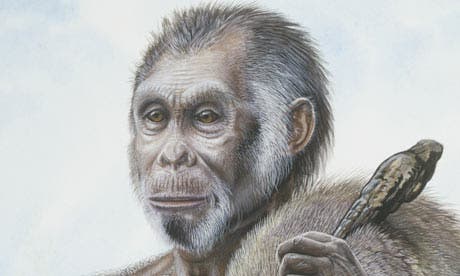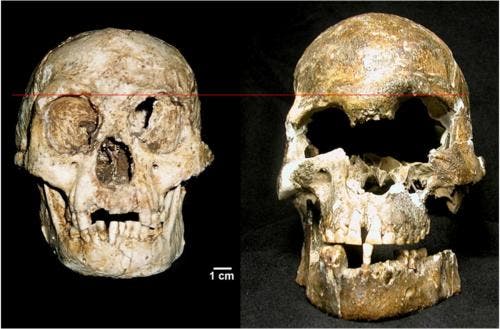In 2004, anthropologists and archaeologists working in Indonesia uncovered what was named “the biggest anthropological finding for 100 years” – fragmentary skeletal remains from the island of Flores were uncovered, appearing to be a new species: Homo floresiensis. But now, new research challenges that find, claiming that the uncovered skeletons were in fact just an abnormal human, most consistent with Down syndrome.

We’ve written several articles describing studies on Homo floresiensis – in 2007, an international team of researchers led by the Smithsonian Institution described it as a 3-foot-tall, 18,000-year-old hominin skeleton with no chin, and less than one year later, Professor Lee Berger of the University of the Witwatersrand in Johannesburg, South Africa claimed that it was not a new species, but rather an already known one, deformed through unhealthy nutrition or genetic defects. The scientific community remained torn between two camps: those who believed it was a new species, and those who believed it was just an aberration.
Now, a new study by Robert B. Eckhardt, professor of developmental genetics and evolution at Penn State, Maciej Henneberg, professor of anatomy and pathology at the University of Adelaide, and Kenneth Hsü, a Chinese geologist and paleoclimatologist, suggests that the single specimen (known as LB1) on which the new designation depend does not represent a new species. Instead, they propose a genetic malformation – most likely Down syndrome.
“The skeletal sample from Liang Bua cave contains fragmentary remains of several individuals,” Eckhardt said. “LB1 has the only skull and thigh bones in the entire sample.”

They also claim some wrong measurements were made when the skull was analyzed initially. The original figures for cranial volume and stature are underestimates, “markedly lower than any later attempts to confirm them.” Eckhardt, Henneberg, and other researchers have consistently found a cranial volume of about 430 milliliters (26.2 cubic inches). The original figure was 380 milliliters (23.2 cubic inches).
“The difference is significant, and the revised figure falls in the range predicted for a modern human with Down syndrome from the same geographic region,” Eckhardt said.
The bottom line is, it’s borderline impossible to prove that the skull belongs to a new species or if it is a genetic aberration. There are some indications that it would be a new species, and, as this team found, that it is not something new, but rather a human suffering from Down syndrome.
“When we first saw these bones, several of us immediately spotted a developmental disturbance,” said Eckhardt, “but we did not assign a specific diagnosis because the bones were so fragmentary. Over the years, several lines of evidence have converged on Down syndrome.”
But extraordinary claims require extraordinary evidence, and one skull and spread out bones are, in my opinion, not enough to fully justify the existence of Homo floresiensis.






